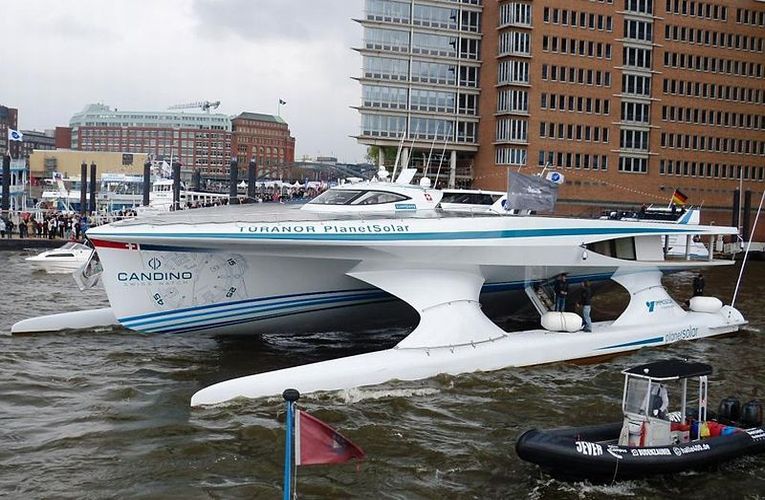When the Pacific Islands Forum, PIF, next meet they may need the facilities of a floating meeting-place. Although the MS TÃ »ranor PlanetSolar catamaran seats only 50, that would enable a meeting of like minds. The intrepid explorer of solar technique sails exclusively by means of its gigantic, 8.5 tonne, six-block lithium ion batteries.
The battery is powered exclusively by its retractable, black photovoltaic panels, which makes it suitable for the Pacific future of exclusively renewable energy envisaged by the Pacific Islands recently in the Majero Declaration. 31 x 15m(23m with flaps) in size, and the world's largest solar-powered vessel, it is said to reach 15 knots and has 500 square metres of panels surrounding the white cockpit. It was constructed at the HDW shipyard in Kiel by Swiss manufacturers and has been skippered by Gerard d'Aboville and Raphael Domjan with a 6-person crew. The cost of the 90 tonne ship amounted to at least $15 million.
Sailing close to the wind is no longer the problem it was for the ship's predecessors, but the vessel stays as close to the Tropics of Capricorn and Cancer as possible, to gain light for their enormous battery. From April 2011 till May 2012, a world tour has encouraged journalists and environmentalists of all types to hitch a ride on a sunbeam and join in. Although by now the technology could be improved, the aim is to show that 2010 could power such a project, while 2014 could be able to achieve the seeming impossible.
Reliability and economy were the keywords in the circumnavigation and will soon hopefully be joined by more high-technology and even speed, as we have improved solar technology by leaps and bounds. At 40,000 miles the round the world journey of 60,000 km (37,000 miles) took 584 days. The recent Atlantic crossing was said to be its second life, in which it was used to study the Gulf Stream's source and sink, from the US to Norway.
La Ciotat in France saw the voyage begin, 3 months ago. Stops were made in Miami, Boston, Newfoundland, Iceland and Bergen and it now lies at anchor all the way up the Seine at Sevres near Paris. I don't suppose even the Swiss can think of a way to sail it there!
"Our goal is to understand the complex interactions between physics, biology and climate ... to refine climate simulation," said Martin Beniston one of the researchers from the Institute of Environmental Sciences at the University of Geneva. As no pollution is encountered near the instruments it carries, accurate measurements of water and air composition and the Gulf current were taken using the latest instruments.










